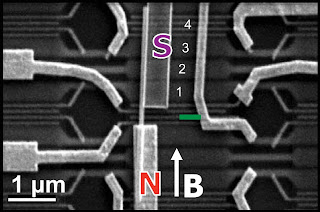In 1937, after the rise of quantum mechanics, Ettore Majorana, an Italian theoretical physicist, realized that the new physics implied the existence of a novel type of particles, now called Majorana fermions. After a 75-year hunt, researchers have now spotted the first solid evidence of their existence. And their discovery could hold the key to finally creating workable quantum computers .
Prior to Majorana's work, Austrian physicist Erwin Schrödinger came up with an equation that describes how quantum particles behave and interact. Paul Dirac, an English physicist, tweaked that equation to apply it to fermions, such as electrons, moving at near-light speed. That work tied together quantum mechanics and Einstein's special theory of relativity. It also implied the existence of antimatter, where every particle has an antimatter counterpart—such as electrons and positrons—and that the two would annihilate each other if they ever met. Dirac's work suggested that some particles, such as photons, could serve as their own antiparticles. But fermions weren't thought to be among them. It was Majorana's manipulations of Dirac's equations that suggested the possible existence of a new type of fermion that could serve as its own antiparticle.
Science Mag: Physicists Discover New Type of Particle--Sort Of

Comments